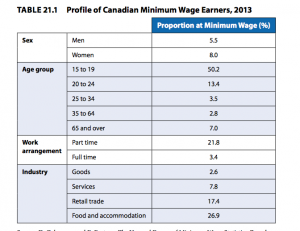Lecture 7: Quits and Employment Standards (Part One)
What This Lecture is About
This lecture begins with the topic of Quits, which is the final subject of the Common Law Regime. We then move from the Common Law Regime to the Regulatory Regime.
The Regulatory Regime involves government intervention in freedom of contract by means of statutes and regulations enacted by politicians. Each law enacted by the government addresses some perceived failure or the common law system of freedom of contract and tort law. Employment is among the most legislated relationships, but we will only have time in this class to explore two types of laws that are very important: employment standards and human rights.
In this lecture, we introduce the Regulatory Regime and some key concepts related to it, and then we move onto consider how governments have regulated Wages.
Lecture Notes
Here are the slides covering Quits.
Here are lecture notes covering Chapter 19: Mapping Labour Market Regulation.
Here are lecture notes covering Chapter 21: The Regulation of Wages
Additional Handouts and Links Referred to In the Lecture
Here’s the video I mentioned in class but did not show about how a Bill becomes a Law. It is based on US law, but the system is similar enough that the video is useful. Plus it is just a really fun video that I watched as a kid!
This handout provides an overview of the complex system of rules that govern minimum wages in Ontario, including a list of all the special categories and exemptions.
This handout details how Ontario law regulates hours of work.

